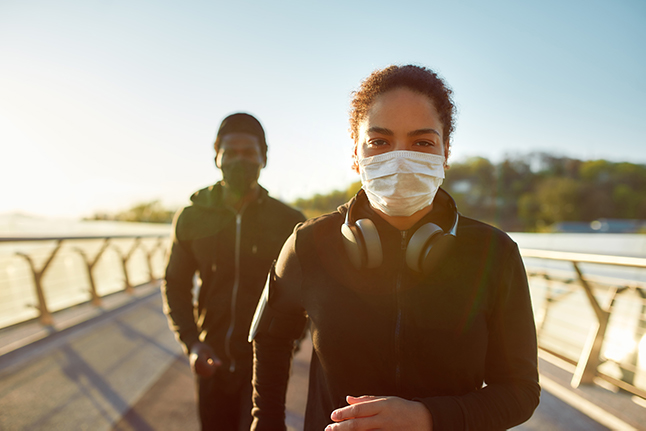
Does Physical Activity Help Boost the Immune System?
Physical activity (PA) offers numerous physical and mental benefits that can enhance more than just your fitness. Its positive impact on bodily function makes it one of the most holistic ways to improve your health. Studies on PA and the immune system are receiving more attention and people are becoming more interested in learning about the relationship between the two. A good question to ask is: Does PA help to boost our immune system?
The immune system is one of the most integrated systems in the human body, and disruptions of the system can lead to undesired health consequences. With the current COVID-19 pandemic, flu season and other ailments, it’s more important than ever we boost our immune systems.
Some common ways to improve the immune system include eating a healthy diet, getting adequate sleep, and engaging in regular PA. A healthy diet can provide essential nutrients for the system to function and getting enough sleep can assist with cell recovery. But how exactly can PA improve your immune system?
Researchers find that aerobic and anaerobic training, along with acute and chronic PA, can have different degrees of positive impact on different populations. In general, PA helps prevent, limit, or delay age-associated decline in immune function.
Physical Activity Increases Immune Cell Counts
As we age, a process called immunosenescence will negatively affect our immune system. Immunosenescence may increase susceptibility to infections and the risk of developing cancers. Researchers learned that regular aerobic training can “restore” or “rejuvenate” an aged immune system to slow down this process.
Specifically, aerobic training can proliferate the numbers of immune cells like T cells and natural killer cells in blood. T cells play an essential role in the system as one of the first responders to infections and natural killer cells circulate in the blood to detect infected cells. The increasing immune cell counts can build a stronger defense line for the immune system.
Regarding the immunological effects of other types of PA, studies show that resistance training generally has limited effects on boosting immune cell counts. However, the combination of resistance and aerobic or endurance training showed a concrete change in immune cell levels in the elderly.
Researchers also discovered that in the hours following PA, natural killer cells circulate to tissues to search for cells infected with viruses, bacteria, or those that have undergone a malignant transformation. The additional role of immune cells in detecting and screening damaged cells aids the immune system greatly.
Other than its direct effects on our immune cells, PA can boost the immune system’s response to vaccine administrations. Evidence from a series of studies indicates that a single acute bout of PA appears to enhance immune responses to vaccination in both younger and older individuals.
Physical Activity Has Anti-Inflammatory Properties
While PA can increase immune cell counts in the system, studies also show it has anti-inflammatory properties. Before discussing the unique properties of PA, it should be known that prolonged inflammation and oxidative stress in the body can lead to diseases like cancers, cardiovascular diseases, diabetes, osteoporosis, neurodegenerative diseases, etc.
Regular PA, on the other hand, has anti-inflammatory mechanisms where training can increase the level of circulating cortisol and increase the production of anti-inflammatory factors from contracting skeletal muscle.
Cortisol is most well-known as a hormone that secretes under stressful situations. In fact, cortisol’s anti-inflammatory characteristic prevents the widespread tissue and nerve damage associated with inflammation, and PA can trigger it. An increased amount of other anti-inflammatory cytokines, such as interleukin-6, are also released from contracting muscle fibers following PA. On the flip side, an extended period of high cortisol levels might lead to negative health effects like high blood pressure. The US Department of Health and Human Services recommends 150 minutes per week for adults to maintain well-being.
Detailed literature reveals that long-term aerobic training interventions in young and elderly individuals elicit strong anti-inflammatory effects. Specifically, physically active elderly markedly reduced the percentage of inflammatory cells after 12 weeks of training.
It Is Never Too Late to Start Moving
While distinct types of PA, frequency, duration, intensity, and gender can contribute to different outcomes, it’s beneficial for everyone to get up and start moving. Building a stronger immune system through PA can help our body stay healthy and efficiently fight against infections.
To explore free resources for ways to get moving, visit our Exercise Anywhere page.
Sources: Campbell and Turner (2018), Sellami et al (2018), Turner and Brum (2017), Gleeson et al (2011), Heim et al (1999)

